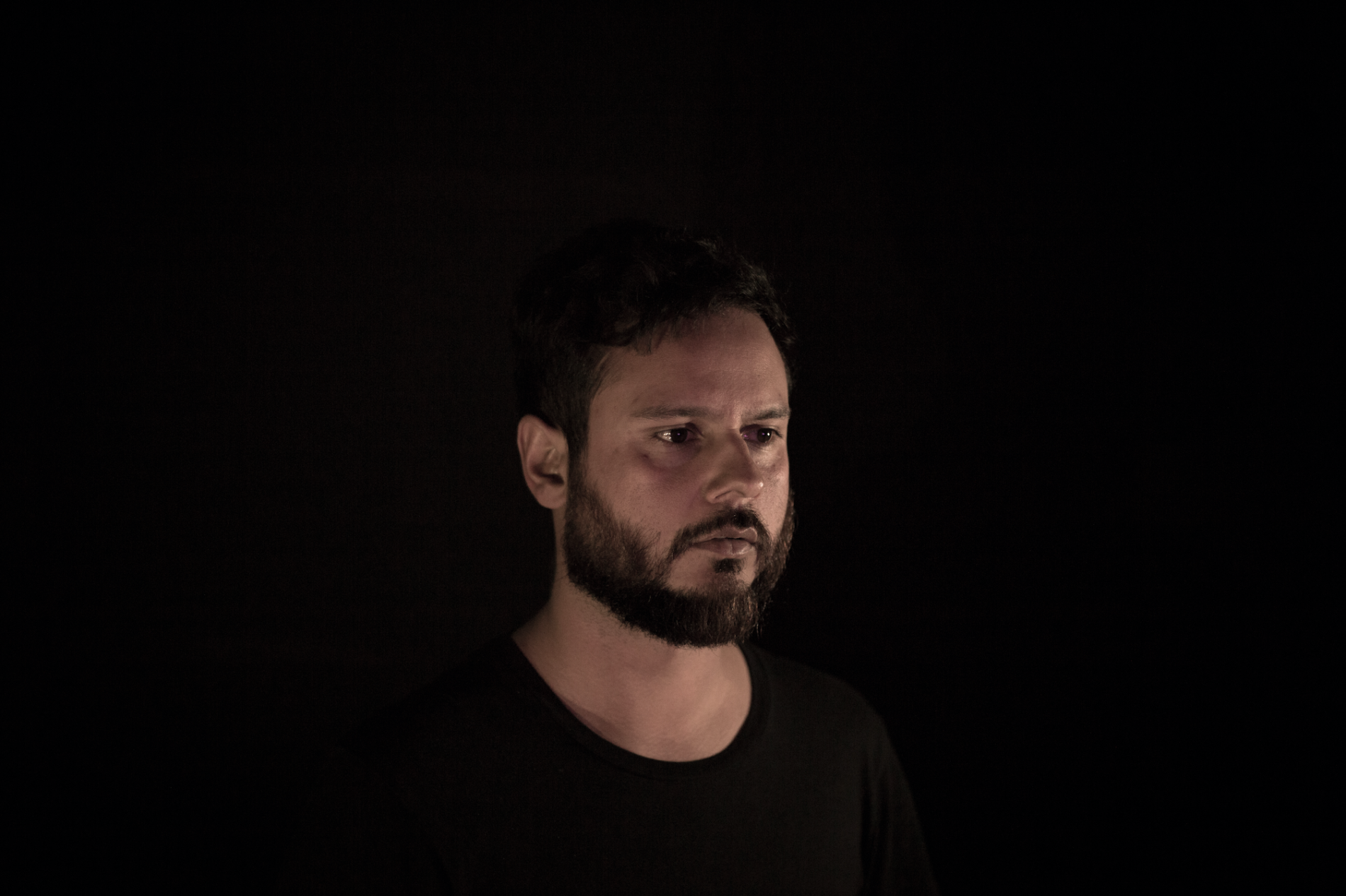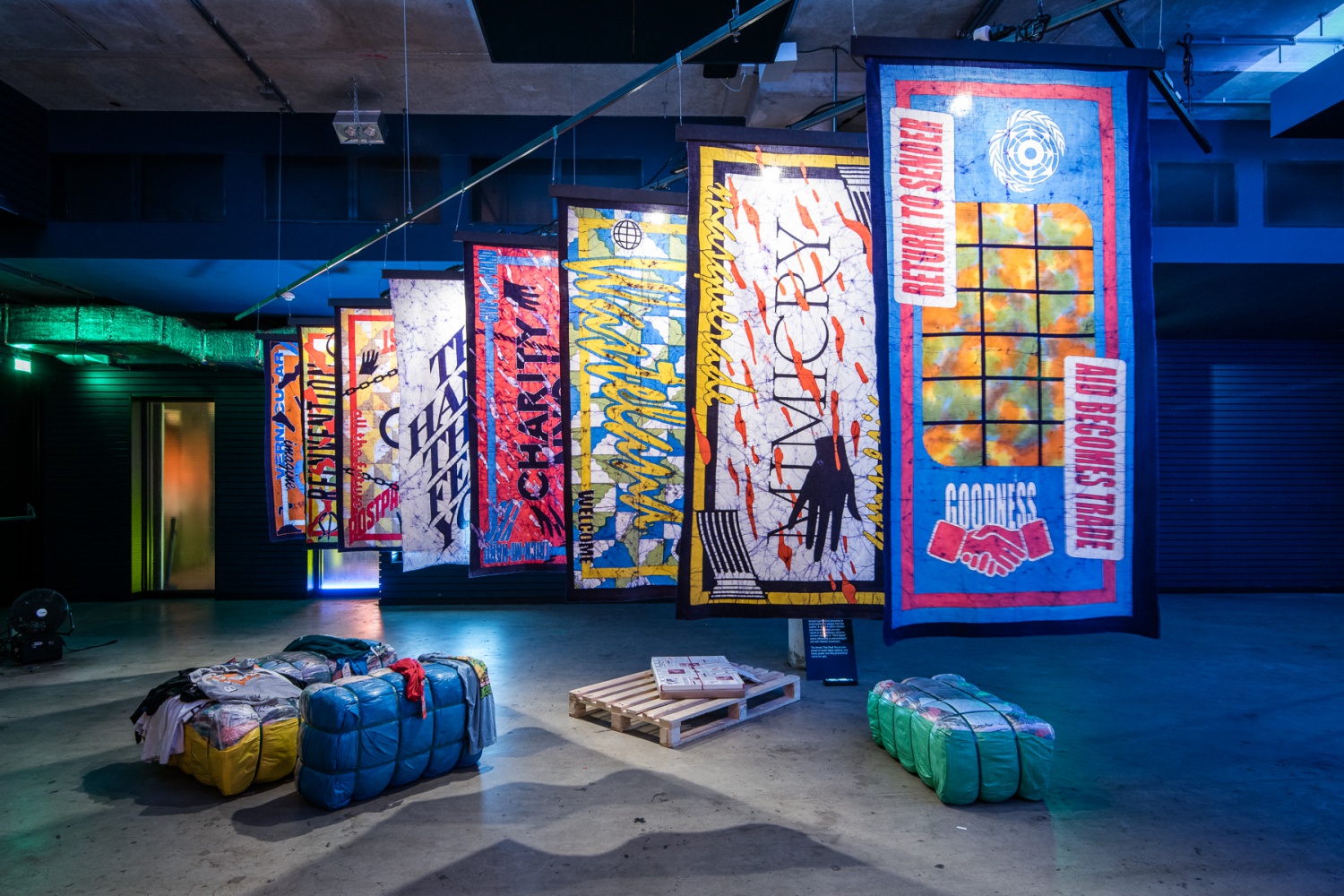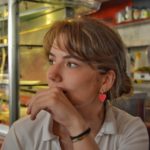Cross-Cultural Collaboration: Portugal - Moçambique
Entrevista João Roxo
ENGLISH VERSION BELLOW
No contexto da residência artística CCC (Cross-Cultural Collaboration) – onde nesta primeira edição exploramos uma colaboração as artistas Catarina Braga (Portugal) e Eliana Nzualo (Moçambique) – tivemos a oportunidade de ouvir quatro artistas convidados a explicarem o seu trabalho e metodologia, ao mesmo tempo que estabeleciam ligações de mentoria com as artistas selecionadas.
Neste artigo, derivado de uma conversa virtual, iremos conhecer melhor as ideias e trabalho de João Roxo, um designer e artista visual moçambicano que vive e trabalha em Maputo. É o co-fundador da ANIMA Estúdio Criativo, o primeiro coletivo dedicado à comunicação para a Arte, a Cultura e o Desenvolvimento Social. Graduado pela Universidade de Aveiro, completou recentemente o Mestrado no departamento de Design do Sandberg Instituut, em Amesterdão. João pretende explorar modelos educacionais renovados e sustentáveis, dentro e ao redor da prática do Design, fundados na independência criativa.
Começamos por perguntar ao João qual era, na sua opinião, a importância de uma colaboração internacional na arte, e de colaborações como o CCC?
“É sempre importante haver intercâmbio – cultural, principalmente. Eu falo por experiência própria, no sentido em que tive a oportunidade, o privilégio, de estudar noutros países que não o meu de origem – sou nascido e vivi grande parte da minha vida em Maputo. Faz sempre bem ter essa oportunidade de ter acesso a outras culturas e identidades. Sinto que quando fui estudar para a Holanda, tinha um bocado essa intenção de conhecer novas coisas e explorar novos sentidos, estava na altura até um bocado saturado de estar a trabalhar aqui (Maputo). Ir para fora, no meu caso foi muito valioso porque me fez reconhecer o valor do meu país e perceber que o meu papel principal estava em estar cá. No entanto, essas ligações que foram estabelecidas continuam a ser e espero que sempre sejam importantes, para estabelecer mais ligações dessas intercontinentais ou entre culturas.”
A conversa continuou na tentativa de entender a conexão entre as ligações internacionais do artista e a procura por colaborações na sua prática artística. João nasceu em Maputo, estudou em Aveiro e mais tarde em Amsterdão, e confirmou que estas experiências o levaram a reconhecer o valor e impacto de oportunidades semelhantes (que tenta espelhar nas iniciativas e projetos que lhe ocorram).
-Na opinião do João, quais são as diferenças artísticas e culturais que considera mais marcantes entre estes dois países (Portugal e Moçambique), e como é que isso se pode traduzir numa boa colaboração?
“Eu penso que à partida, existe muito common ground – partilhamos uma história, de certa forma. Penso que essa ligação é muito importante, mas suponho também (e de acordo com o perfil dos artistas selecionados) que haverá muito espaço para um certo sentido crítico, porque nos tempos que correm sinto que isso está cada vez mais presente – na arte, na sociedade e assim consecutivamente. Espero que essas vozes transpareçam no trabalho de cada artista. Em relação às diferenças, penso que são sempre importantes – é preciso reconhecer isso como sendo uma mais-valia. Estou seguro de que estas oportunidades são o caminho a seguir. Quando tive acesso à vossa proposta fiquei bastante interessado, principalmente pela abordagem inovadora – não só com a questão da blockchain naturalmente, mas também o foco específico que vocês escolheram – sinto que a língua é uma componente importante nesse sentido, para facilitar a comunicação e também para encontrar esse common ground ao qual me referia.”
-Vi o projeto em que o João trabalhou – The Hand That Feeds You – que reflete sobre “dependências económicas, políticas, sociais e psicológicas traduzidas numa fuga ao sistema”. Podia explicar melhor este sistema, e quais considera serem os efeitos desse sistema na arte do presente?
“Esse projeto e tema de pesquisa surge de um contexto específico relacionado com o que falámos antes. Sair de cá (Maputo) e ter sido aceite numa universidade conceituada – Gerrit Rietveld Academie, mais concretamente o departamento de mestrados The Sandberg Instituut – foi uma grande oportunidade para ter o meu sentido crítico provocado. Ao escolhermos as temáticas (de pesquisa) havia uma tendência para recorrer à nossa origem e trabalhar algo que de facto fosse relevante para nós, e para mim neste caso. E foi no meio dessa exploração, desse primeiro ano mais exploratório, que tive acesso à Teoria da Dependência, que trata especificamente o Eixo Norte-Sul, e explora a questão dessas dependências/expressões – na verdade o meu projeto já explora algo mais abrangente, não só a expressão política e geopolítica, mas também os impactos que têm ao nível psicológico monetário, etc. E uma dessas expressões é a ideia de ajuda humanitária – que é utilizada ou desconstruída e acaba por ganhar uma proporção pornográfica – que perpetua essa relação de quem precisa de ajuda e de quem está a ajudar, e também uma postura ou posição de certa forma neocolonial. Então o meu trabalho passa um pouco por assumir e analisar o impacto dessas expressões, e de reconhecer o valor da criatividade existente maioritariamente para quem vive no sul global – que é um pouco a ideia de quanto maior a necessidade que tens, maior o teu espírito criativo; quanto maior o desconforto, maior a necessidade de criar e encontrar soluções. E senti que era a temática a explorar e por ali fui e trabalhei com artesãos para conseguir construir uma apresentação do projeto – escolhi o Batik como técnica e apliquei as mensagens com base nesta narrativa.”
A dinâmica do espaço escolhido para a exposição de Durban foi algo que nos interessou ao pesquisar o trabalho do João: a saída do espaço convencional da galeria para um local não institucional. Tentamos perceber se, na opinião do artista, com esta mudança, estaria a contribuir para um aumento da participação cultural em zonas normalmente desprovidas de arte, e para grupos que não tenham uma participação cultural tão ativa, e como é que esta simples mudança poderia contribuir para a construção de uma sociedade mais inclusiva?
“Sim, o projeto, na sua origem surge dessa minha pesquisa em Amsterdão e da criação deste conceito do “Terceiro Espaço“ – um conceito criado e utilizado por Homi Bhabha, um pensador pós colonial que explora a ideia de espaço híbrido de diálogo – e esta foi a minha forma de transmitir a ideia de que não é uma questão de polarização, mas sim uma questão de equilíbrio. Posteriormente tive a oportunidade de expor individualmente em Maputo no Centro Cultural Português, e neste caso foi numa galeria, ou seja, o projeto tem sido adaptado (aos espaços), é meio que site specific. Depois encontrei um colaborador, Russel Hlongwane que vive em Durban na África do Sul, que acreditou no projeto e com quem me identifiquei, e o projeto ganhou uma nova dimensão. Nós, como coletivo Third Space começamos a explorar esta ideia de design especulativo que está em voga no norte mas que de facto tem uma expressão muito forte no nosso contexto. E então passamos a explorar esse projeto e as suas várias iterações consoante o espaço escolhido. E no caso de Durban, na África do Sul, a ideia foi mesmo levar os batiks, essas mensagens, para um lugar onde se sente muito essa expressão de dependência, de ajuda humanitária, que é com o mercado de roupas em segunda mão. E então foi muito interessante colocar a exposição na rua e sentir a reação das pessoas, também no sentido de que as pessoas estão a fazer o seu dia-a-dia e a ganhar o pão do dia seguinte quase, não há uma reflexão aprofundada da origem de tudo aquilo. A exposição continua a percorrer outros pontos do mundo – esteve na Europa, está para ir para Lubumbashi também, e em cada lugar que este projeto, esta reflexão é apresentada, há sempre uma identificação com esse contexto, tanto no meio africano como no norte. No caso da exposição de Amsterdão, eu vim para os mercados dos arredores de Maputo, e escolhi as tshirts que vem dos fardos e que carregam só por si mensagens e fiz screen printing nessas tshirts; levei as de volta para a Holanda e vendi-as na exposição, numa expressão de dar de volta essa caridade e essa expressão de caridade mascarada.”
No final da conversa, João Roxo demonstrou o seu interesse pelo projeto e trabalho da wendy.network, e mencionou o quanto se identifica com a abordagem da blockchain, principalmente para o meio criativo. “Na ANIMA, nós trabalhamos com comunicação e design e temos um projeto makelinks.africa, através do qual estamos a propor criar uma rede cultural ao nível do continente (que depois se pode tornar global), que também está a ser construída na lógica da blockchain. E é muito interessante ver outros projetos que exploram a tecnologia, porque acredito que seja uma ferramenta e um mecanismo para garantir a resiliência e a sobrevivência desta comunidade criativa que tem sofrido bastante nos últimos tempos, principalmente no continente africano no qual a cultura é muito pouco subsidiada”.
http://joaoroxo.com/
https://anima.co.mz/
https://makelinks.africa/
MAGAZINE
Cross-Cultural Collaboration: Portugal - Mozambique
Interview João Roxo
English Version
In this first edition of the art residency CCC (Cross-Cultural Collaboration) – in which we explored the collaboration between the artists Catarina Braga (Portugal) and Eliana NZualo (Mozambique) – we had the opportunity to hear about the work and methodology of four guest artists, at the same time that mentorship connections were established with the selected artists.
In this article, as a product of a virtual talk, we will get to know some of the ideas and work of João Roxo, a Mozambican designer and visual artist who lives and works in Maputo. He is the co-founder of ANIMA Creative Studio, the first initiative dedicated to Arts, Culture and Social Development. He has a BA from the University of Aveiro and a Masters degree in Design from the Sandberg Instituut, in Amsterdam. The artist explores new and sustainable educational systems, revolving around design practices.
We started by asking João his opinion on the importance of international Art collaborations, and of collaborations like the CCC.
“It’s always important to have exchanges – especially cultural. I am speaking from personal experience, I had the opportunity, the privilege to study abroad in a country that is not my native one – I was born and lived most of my life in Maputo. It is always good to have that opportunity, to have access to other cultures and identities. I feel like, when I went to study in The Netherlands, I had the intention of meeting new things and exploring new senses, I kind of had enough with working here (Maputo). Going abroad, in my case, was highly valuable because it made me recognize the value of my home country and understand that my main purpose remained here (Maputo). However, the connections that I established still remain, and I hope they’ll always be important to create more of these intercontinental and cultural connections.”
Our conversation continued aiming to understand the link between the artist’s international connections and his pursuit for artistic collaborations. João was born in Maputo (Mozambique), studied in Aveiro (Portugal) and later in Amsterdam (Netherlands), and confirmed that these experiences lead him to acknowledge the value and impact of such opportunities (which he tries to mirror in every initiative and projects he comes up with).
In your opinion, what are the most meaningful artistic and cultural differences between these two countries (Portugal and Mozambique), and how can that translate itself into a good collaboration?
“I believe that, from a starting point, there is a lot of common ground – we share history together, in a way. This is a very important connection, and I suppose (and taking into consideration the profile of the selected artists) there will be space for critical discussion, that I feel to be more and more present – in art, in society and so on. I hope those voices can be seen in the work of each artist. Regarding the differences, I consider them to always be important – you have to recognize them as added value. I am certain that opportunities like this one are the future. I was very interested when I found your proposal, especially because of its innovative approach – not only with the blockchain naturally, but also with the specific chosen focus – sharing a language is a very strong component not only to facilitate communication but also to find that common ground I was talking about.”
I was looking into your project ‘The Hand That Feeds You’ that reflects on, and I quote, ‘economic, political, social and psychological dependency’, translated into an escape from the System. Could you elaborate on this System and its effects on present day Art?
“This project and research topic comes from a very specific context, related to what we’ve been discussing. To leave Maputo and be accepted in a prestigious university – Gerrit Rietveld Academie, respectively The Sandberg Instituut’s master department – was a major opportunity to have my critical thinking challenged. When choosing the (research) topics, there was a tendency to return to our origins and work something actually meaningful for ourselves, and to me in this case. And during this exploration, this first more exploratory year, I found out about the Dependency Theory, dealing with the North-South model, and it explores these dependency matters – in reality my project deals with something more broad, not just the political and geopolitical expression, but also its psychological, economical impacts. And one of these expressions is the humanitarian help idea – that is used or deconstructed and actually ends up gaining a pornographic proportion – that perpetuates this relationship of who needs help and who is helping, and also a certain neocolonial position or posture. So my work relates to this process of assuming and analysing the impact of those expressions, of recognizing the value of the creativity mainly for those living in the global south – that comes a little bit from the idea that the bigger your necessity, the bigger your creative spirit; the bigger the discomfort, the bigger the need to create and find solutions. And I felt this was the topic to pursue, and I worked with craftsmans to build the project presentation – I chose Batik as the technique and applied messages based on this narrative.”
I found the dynamic of the chosen space to exhibit quite interesting: leaving the conventional gallery site into a non-institutional site. Do you consider that, with this change of environment, you are contributing to an increase of cultural participation in areas normally deprived of art? How can this simple change contribute to the construction of a more inclusive society?
“Yes, originally this project comes from my research in Amsterdam and from the creation of this ‘Third Space’ concept – created and used by Homi Bhabha, a postcolonial thinker that explores the idea of a hybrid space of dialogue – and this was my way of transmitting that its not only about polarization, but actually about balance. I then had the opportunity to exhibit in the Portuguese Cultural Center in Maputo, and in that case it was exhibited in a gallery space. So the project has been adapted (to the spaces), and is kind of site specific. It was then that I found a collaborator, Russel Hlongwane, living in Durban, South Africa, that believed in the project and with whom I identified, and so the project gained a new dimension. As a Third Space collective, we started exploring the idea of speculative design, a very popular concept in the north, but that gains a very strong expression in our context. And so we were exploring the project and its iterations according to the chosen site. In the case of Durban, South Africa, the idea was to bring the batiks, those messages, to a place where the expression of dependency, of humanitarian help are highly felt – the second hand clothing market. It was very interesting to exhibit on the street and feel the people’s reaction, also because people were there to do their day-to-day activities or even just to make a living, there is no reflection about where it all comes from. This exhibition is still going around the world – it was in Europe, is now going to Lubumbashi as well, and in each place where this project, this reflection is presented, there is always an identification with the context, both in Africa and in the north. Regarding the Amsterdam exhibition, it was in the markets surrounding Maputo that I picked the t-shirts that come in bundles and that carry a message by their own, and I screen printed on them; took them back to The Netherlands and sold them in the exhibition, as and expression of returning that charity and of masked charity.”
At the end of our talk, João Roxo demonstrated his appreciation for wendy.network’s project and work, and mentioned how much he identifies with the blockchain approach, specially in the creative field. “At ANIMA, while working with communication and design, we developed a project makelinks.africa, through which we are trying to build a continental cultural network (that can later become global), and is also being built on the same blockchain logic. And it interests me to see other projects exploring technology, as I believe it is a tool and a mechanism to ensure the resilience and survival of the creative community that has been suffering quite a lot in these periods, specially in the African continent in which culture is very little subsidized.”
If you want to find more about the artist and his projects, check the links bellow:
http://joaoroxo.com/
https://anima.co.mz/
https://makelinks.africa/



